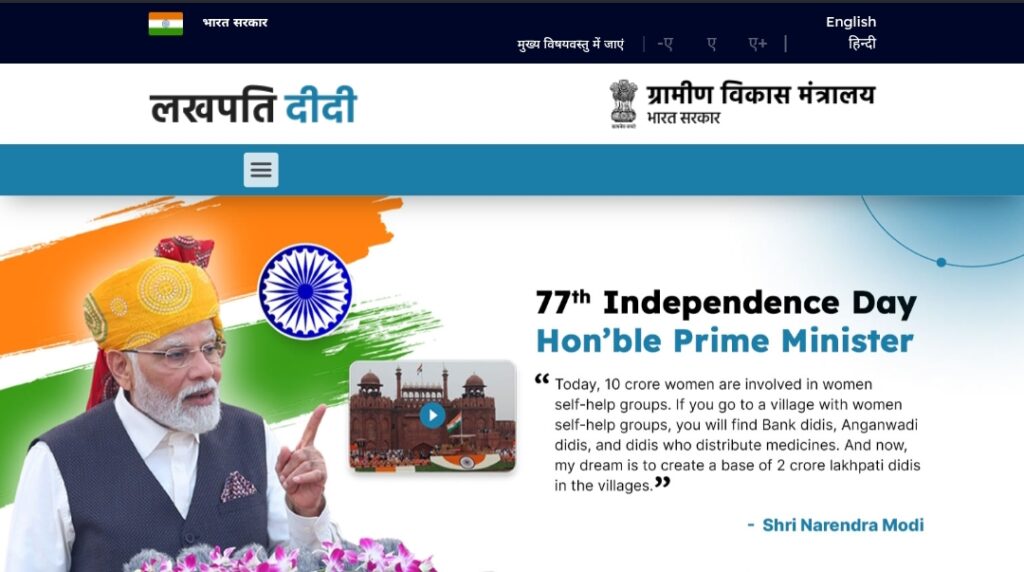The Lakhpati Didi Sahayika Yojana 2025 is a fresh new program initiated by the Odisha government to assist women who work as community support staff at the ground level. The program is designed to make these women financially independent by giving them a regular income. The government will cover the cost of remuneration of more than 62,000 community support staff workers temporarily, and their salaries will commence from April 2024. Grants will also be made available to Gram Panchayat Level Federations (GPLFs) for smooth implementation of the scheme

The overall goal of the Lakhpati Didi Sahayika Yojana is to encourage economic empowerment of women in self-help groups (SHGs) in order to assist them in earning Rs 1 lakh per year. The state government aims to establish 25 lakh ‘Lakhpati Didis’ by the year 2027. It is one part of the larger vision of making women self-sufficient and participating in the welfare of Odisha as a whole
Yuvashree Prakalpa Scheme 2025 : Eligibility, Docs & Age Limit
overview table for the Lakhpati Didi Sahayika Yojana 2025:
| Category | Details |
|---|---|
| Scheme Name | Lakhpati Didi Sahayika Yojana 2025 |
| Launched By | Odisha Government |
| Start Date | April 2024 |
| Objective | Promote economic growth among women in self-help groups (SHGs) |
| Target | Create 25 lakh ‘Lakhpati Didis’ by 2027 |
| Beneficiaries | Over 62,000 community support staff members |
| Income Goal | Help women earn an annual income of Rs 1 lakh |
| Funding | Temporary remuneration cost and grants to Gram Panchayat Level Federations (GPLFs) |
| Main Purpose | Financial independence for women and support for grassroots community workers |
| Contact Information | To be updated by the Odisha Government |
Benefits of Lakhpati Didi Sahayika Yojana 2025
- Monetary Assistance: Pays women who work as community support personnel.
- Income Goal: Targets the annual income of women to be Rs 1 lakh.
- Beneficiary Count: More than 62,000 members of community support personnel will be benefited.
- Government Subsidy: Subsidies to Gram Panchayat Level Federations (GPLFs) for execution.
- Independence: Fosters financial independence among women.
- Economic Growth: Encourages economic growth among women in SHGs.
- Target Creation: Creates a target of 25 lakh ‘Lakhpati Didis’ by 2027.
- Retrospective Payment: Pays pending dues for the past 10 months.
- Support Roles: Comprises roles such as Community Resource Person, Master Bookkeeper, Bank Mitra, and Prani Mitra.
- State Commitment: Demonstrates the state government’s commitment towards making women self-dependent and establishing a prosperous Odisha.
Process To Apply for the Scheme
To apply for the Lakhpati Didi Sahayika Yojana 2025, you will have to go through the following procedure:
- Visit the Official Website: Visit the official website that is specialized in the scheme
- Fill Out the Application Form: Fill out the online application form with all details
- Attach Necessary Documents: Upload documents required such as Aadhaar Card and other documents required for identification
- Submit the Application: Submit the completed application form online
- Track Application Status: Monitor your application status through the website
Eligibility Criteria for Lakhpati Didi Sahayika Yojana 2025
- Gender: Must be female.
- Residency: Must reside in Odisha.
- Employment: Must be employed as grassroots-level community support staff.
- SHG Membership: Must be a member of an SHG.
- Annual Income: Should have an annual income of at least Rs 1 lakh.
- Role: Suitable roles are Community Resource Person for Community Mobilization, Master Bookkeeper, Bank Mitra, and Prani Mitra.
- Age: Should fulfill the age requirement laid down by the scheme (details to be verified on the official website).
- Documentation: Should submit required documents such as Aadhaar Card, residence proof, and SHG membership details.
- Training: Should have completed or be ready to complete any training programs as required by the scheme.
- Government Compliance: Shall abide by any other requirements specified by the Odisha government for the scheme.
Lakhpati Didi Sahayika Yojana 2025 FAQs
1. What is a Lakhpati Didi?
A Lakhpati Didi is a Self-Help Group (SHG) member whose household income per year exceeds Rupees One Lakh (Rs. 1,00,000), with an average monthly income of Rupees Ten Thousand (Rs. 10,000) or higher, maintained for a minimum of four agricultural seasons and/or four business cycles.
2. What have been the steps taken to make SHG members Lakhpati Didis?
The government has launched several schemes and programs to make SHG members earn a minimum of Rs. 1 lakh per annum. These include offering financial assistance, training, and facilities to improve their skills and productivity.
3. What are the selection criteria for identifying potential Lakhpati Didis?
Identified Potential Lakhpati Didis are those whose annual household income is above Rs. 1 lakh and have a steady monthly income of Rs. 10,000 or more continued for a period of at least four agricultural seasons or business cycles.
4. Who is the Master Trainer for training Community Resource Persons on Lakhpati Didi?
The Master Trainer is usually a mature professional designated by the government or concerned bodies to train Community Resource Persons (CRPs) on the Lakhpati Didi program.
5. Who will train the Community Resource Persons on Lakhpati Didi?
They are trained by the Master Trainer, who transfers knowledge and skills to the CRPs so that they can guide SHG members to become Lakhpati Didis.
6. What are the key subjects addressed in the training for Community Resource Persons on Lakhpati Didi?
The training addresses subjects including financial literacy, income generation, entrepreneurship, and sustainable agriculture.
7. Where can the Training Module for Community Resource Persons on Lakhpati Didi be found?
The training module may be downloaded from the official website of the government department or agency conducting the Lakhpati Didi scheme.
8. What is the Cascading Training Plan?
The Cascading Training Plan is a process of training a few selected people who in turn train others, and so on, to reach a large number of people.
9. What are the key strategies of the Government for enabling Lakhpati Didis?
The government’s main strategies are to offer financial assistance, training, and infrastructure to SHG members and to establish an enabling environment for women entrepreneurs.
10. Which DAY-NRLM programs/projects will be beneficial in empowering Lakhpati Didis?
The Start Up Village Entrepreneurs Programme, One Stop facility, Micro Enterprise Development Programme, and Cluster Intervention under NRLM have been formulated to help SHG members become Lakhpati Didis.
11. What financial assistance can be given to Self Help Groups and its members?
SHGs and their members are eligible to receive financial assistance under numerous schemes, such as loans, grants, and subsidies offered by the government and other financial institutions.
12. What are Producer Groups? How is it useful for a Lakhpati Didi?
Producer Groups are created to improve the collective bargaining potential and market access of SHG members to increase their income levels.
13. What is the Start Up Village Entrepreneurs Programme? How will it benefit Lakhpati Didis?
The programme plans to encourage entrepreneurship among rural women through the required skills, resources, and support to establish and run their businesses.
**14. What is One Stop facility and how is it useful for a Women Entrepreneur?
The One Stop centre offers a single access point for women entrepreneurs to access a range of services such as financial support, training, and market linkages.
15. How is the Micro Enterprise Development Programme beneficial to the Lakhpati Didis?
The programme is aimed at developing micro-enterprises owned by SHG members, equipping them with the support required to expand their businesses.
16. How is the Cluster Intervention under NRLM beneficial to a Lakhpati Didi?
Cluster Intervention implies grouping SHG members into clusters to improve their productivity, access to markets, and income levels through group work.
